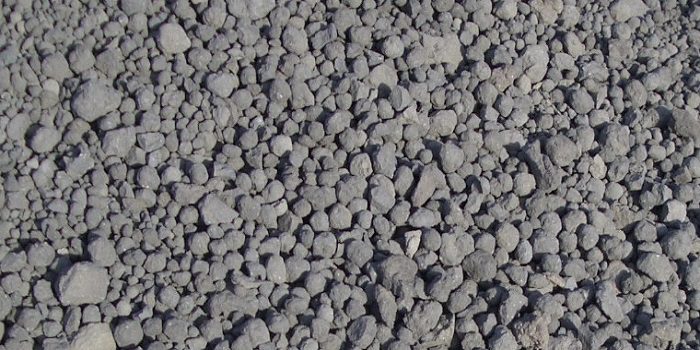Different minerals need to be mined in order to make cement. Limestone (containing the mineral calcite), clay, and gypsum make up most of it. The US Geological Survey notes that cement raw materials, especially limestone, are geologically widespread and (luckily) abundant. Domestic cement production has been increasing steadily, from 66.4 million tons in 2010 to about 80.5 million tons of Portland cement in 2014 according to the U.S. Geological Survey 2015 Cement Mineral Commodity Summary. The overall value of sales of cement was about $8.9 billion, most of which was used to make an estimated $48 billion worth of concrete. Most construction projects involve some form of concrete.
There are more than twenty types of cement used to make various specialty concrete, however the most common is Portland cement.
Cement manufacturing is a complex process that begins with mining and then grinding raw materials that include limestone and clay, to a fine powder, called raw meal, which is then heated to a sintering temperature as high as 1450 °C in a cement kiln. In this process, the chemical bonds of the raw materials are broken down and then they are recombined into new compounds. The result is called clinker, which are rounded nodules between 1mm and 25mm across. The clinker is ground to a fine powder in a cement mill and mixed with gypsum to create cement. The powdered cement is then mixed with water and aggregates to form concrete that is used in construction.
Clinker quality depends on raw material composition, which has to be closely monitored to ensure the quality of the cement. Excess free lime, for example, results in undesirable effects such as volume expansion, increased setting time or reduced strength. Several laboratory and online systems can be employed to ensure process control in each step of the cement manufacturing process, including clinker formation.
Several laboratory and online systems can be employed to ensure process control
Laboratory X-Ray Fluorescence (XRF) systems are used by cement QC laboratories to determine major and minor oxides in clinker, cement and raw materials such as limestone, sand and bauxite. Read Analysis of Clinker and Cement with Thermo Scientific ARL OPTIM’X WDXRF Sequential Spectrometer to learn why XRF is the technique of choice for elemental analysis in cement industry. Combination X-Ray Fluorescence (XRF) and X-Ray Diffraction (XRD) systems accomplish both chemical phase analysis for a more complete characterization of the sample. Clinker phase analysis ensures consistent clinker quality. Such instrumentation can be fitted with several XRF monochromators for major oxides analysis and a compact diffraction (XRD) system which has the capability of measuring quartz in raw meal, free lime (CaO) and clinker phases as well as calcite (CaCO3) in cement.
Read XRF/XRD Combined Instrumentation Can Provide Complete Quality Control of Clinker and Cement to learn more about technology that combines the advantages of both XRF and XRD together.
Cross Belt Analyzers based on Prompt Gamma Neutron Activation Analysis (PGNAA) technology are installed directly on the conveyor belt to measure the entire material stream continuously and in real time to troubleshoot issues in pre-blending stockpile control and quarry management, raw mix proportioning control, and material sorting. Read PGNAA Improves Process and Quality Control in Cement Production to learn what makes PGNAA particularly suited for cement analysis.
Accurate cement production also depends on belt scale systems to monitor output and inventory or regulate product loadout, as well as tramp metal detectors to protect equipment and keep the operation running smoothly. The Cement Manufacturing Process flow chart sums up where in the process each type of technology is making a difference.
Ref:thermofisher.com




